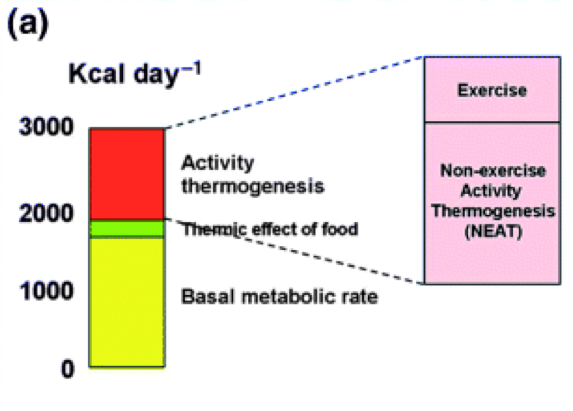

Basal metabolic rate is the energy required for core body functions and is measured at complete rest without food. The components of human energy expenditure are basal metabolic rate, the thermic effect of food and activity thermogenesis. In the absence of firm data that link increased dietary intake to obesity, the role of energy expenditure in human energy balance has come under greater scrutiny.Ĭlassically, there are three components of human daily energy expenditure ( Fig. 1a). The NHANES surveys in the United States are difficult to interpret because the method used to examine energy intake changed between surveys. For example in Britain obesity rates have doubled since the 1980s yet energy intake appears to have decreased. However, there is controversy as to whether increased energy intake has accompanied the obesity epidemic. It is accepted that nutritional quality is often poor. Because of the health and economic costs of obesity the urgency to understand why humans are gaining weight has intensified. In the United States for example, since the 1970s the weight of the average person has increased by ∼12 kg and importantly this trend effects all ages, races and socio-economic groups. The pandemic of obesity has spread from the US to Europe and is now emerging in middle and even low income countries. Excess body fat and obesity are the result of sustained positive energy balance. Try incorporating the below into your every day to help you achieve your wellness goals.By the law of conservation of energy, body fat increases when energy intake is consistently greater than energy expenditure. What’s neat is that there are opportunities to engage in NEAT activities all around us, and the calories we burn here and there from engaging in these activities can really add up. The other half of TEPA is comprised of non-exercise activity thermogenesis (NEAT) which is basically all your other day-to-day activities that require physical activity. While this is still an important component to your overall wellness and calorie burn, there is actually a lot of potential to burn calories outside of the gym as well. Most people only think of this in terms of exercise-related activity thermogenesis (EAT) or the work that you do in the gym.

Your TEPA is the component you have the most control over. This accounts for 15-30% of your TDEE and varies from person to person depending on their level of activity. And lastly, there is your thermic effect of physical activity (TEPA). TEF accounts for 15-30% of your TDEE and represents the amount of energy needed to breakdown and convert food for the body to use. Next, we have the thermic effect of food (TEF). It takes a lot of calories just to exist. This accounts for about 60-75% of your total daily energy expenditure (TDEE). Your BMR is the amount of energy your body requires for normal bodily functions like proper brain and organ functioning and blood circulation. The first is your basal metabolic rate (BMR). The way we expend that energy can be broken down into 3 categories. In order to lose or maintain our weight, we must expend the same amount or more of the energy that we take in. Weight loss/gain/maintenance all depends on the balance of that energy.

We eat and store calories in our body for energy to sustain our lives. When you think about burning calories, what comes to mind? You’re probably picturing treadmills, an outdoor jog, cycling, perhaps your favorite bootcamp…well it turns out that the work you do in the gym is only a small part of your overall daily burn.


 0 kommentar(er)
0 kommentar(er)
